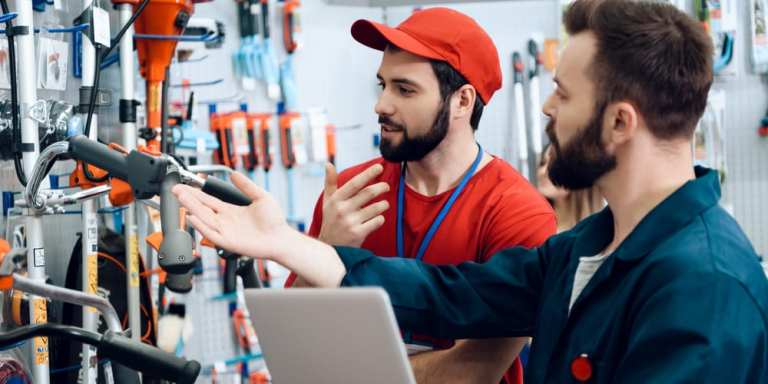
While eCommerce may be thriving, that doesn’t mean retailers should ignore evolving their in-store experiences. In fact, retailers that focus on revamping only one sales channel are more likely to have difficulties generating consumer loyalty. In the latest Commerce Connected Playbook, PYMNTS spoke with Deanna Moreno Hernandez at Ace Hardware about the importance of crafting seamless omnichannel shopping experiences to boost customer conversion.
Today’s retailers collect more data than ever before, helping them engage consumers who can access seemingly endless brands, shopping channels and payment methods. These ample options can make managing customer conversion or retention strategies unwieldy, especially because consumers frequently change their minds about where and how they shop.
One survey defines 85.9 percent of millennials as digital buyers. Another report found that younger generations are also far more likely than older shoppers to buy items in stores: Only 13 percent of baby boomers planned to do more in-store shopping in 2019 than in previous years, compared to a combined 43 percent of millennial and Gen Z consumers that made such plans.
This data suggests that retailers that focus on innovating only one sales channel will likely squander opportunities and have difficulties generating consumer loyalty. Brands should instead take hybrid approaches to customer relationships, maintaining both the speed expected from online and mobile platforms as well as in-store shopping’s convenience and tactile advantages, according to Deanna Moreno Hernandez, mobile marketing senior manager at hardware retailer Ace Hardware.
“We are in the process of enhancing our data capabilities to see a more holistic view of our consumers and their shopping journeys to better serve their needs [on] whichever channels they prefer to [use],” Hernandez said. “We lean on our IT team to help develop in-house technologies to serve our retailers so they can provide memorable experiences in-store.”
Ace is revamping its rewards system and mobile channel to that end, Hernandez continued, but the company is also making sure its new experiences work with its existing physical locations and consumer shopping patterns. Consistently seamless experiences are key to retaining customers regardless of where they shop.
The Importance Of Omnichannel Ease Of Use
Retailers desiring smooth omnichannel experiences must harmoniously maintain three distinct shopping channels that serve shifting payment and customer needs, all without distracting consumers. Shoppers are expecting increased personalization as well, meaning retailers must carefully consider how to foster customer trust and satisfaction.
Mobile is thus emerging as a top channel for today’s retailers — and not just because of its ease of use and popularity among younger consumers. This channel can also bridge in-store and online experiences, improving personalization at brick-and-mortar stores and allowing shoppers to track purchases and loyalty points on the go.
“The [new Ace] mobile app is enabling this [convenience] by offering personalized experiences,” Hernandez said. “The questions that a store owner would ask to get to know customers better are replicated in the mobile app.”
Ace has also grafted this mobile experience into its delivery options, allowing customers to mix and match where they make purchases, she added. App users can shop products and schedule pickups at particular locations or search for the nearest stores, and all can offer promotions directly within the app.
“Your purchases, whether in-store or online, are reflected on acehardware.com and in the app and can easily be repurchased,” she said. “The fulfillment options of buying online and picking up in-store, assembly and delivery from your local store leverages our retail footprint of more than 4,500 stores to ensure the customer has a positive experience shopping in-store or digitally, in our new app or [on] acehardware.com.”
Using mobile to connect online and brick-and-mortar sales can also help retailers maintain consumers’ trust. All purchases are categorized and maintained on devices that typically never leave shoppers’ hands, encouraging them to head back to familiar brands.
Loyalty In The New Age Of Retail
Ace is relying more on mobile as an integral part of its loyalty strategy, Hernandez noted, adding that the retailer is implementing app features to simplify the purchasing process.
“The integration of our loyalty program, Ace Rewards, will allow members to easily access their membership cards, coupons, rewards and birthday offers all in one place,” Hernandez said. “Long gone are the days where customers will need to carry the coupon around to ensure they use it.”
Developing this mobile loyalty has its own obstacles, though. Smartphone real estate is finite, and brands stake their claim by creating easily navigable and convenient mobile apps. Ace is hoping its offerings will entice consumers and boost customer conversion, as such offerings — especially those tailored to mobile — may enable retailers to build trust with brand-agnostic consumers.
Merchants will have to continually update their strategies, however, if they want to maintain customer relationships and satisfy new generations. Brick-and-mortar, mobile and online channels will likely experience major shifts in consumer behaviors over the next few years, and successful retailers will be the ones that engage consumers and anticipate what they want.